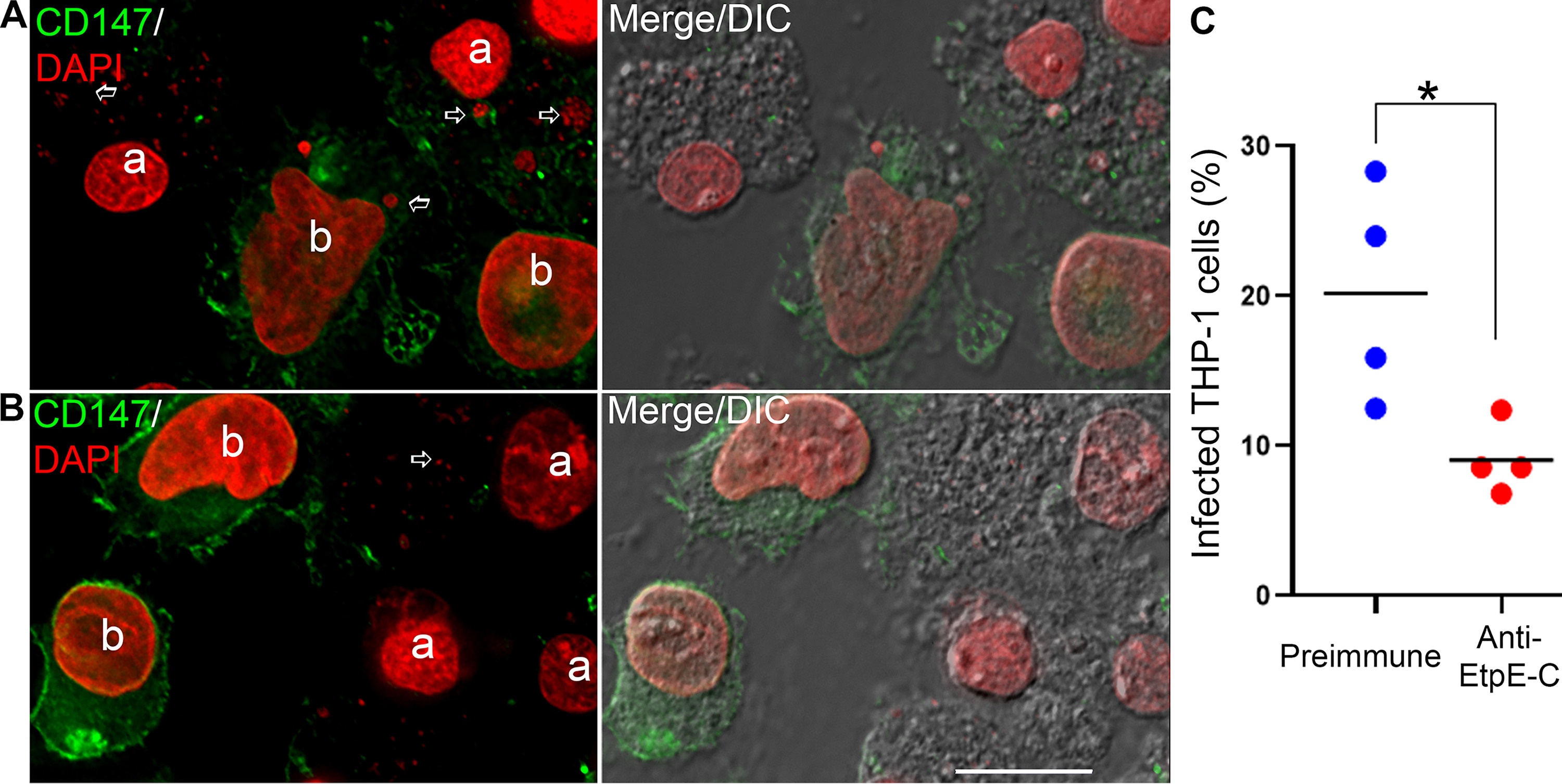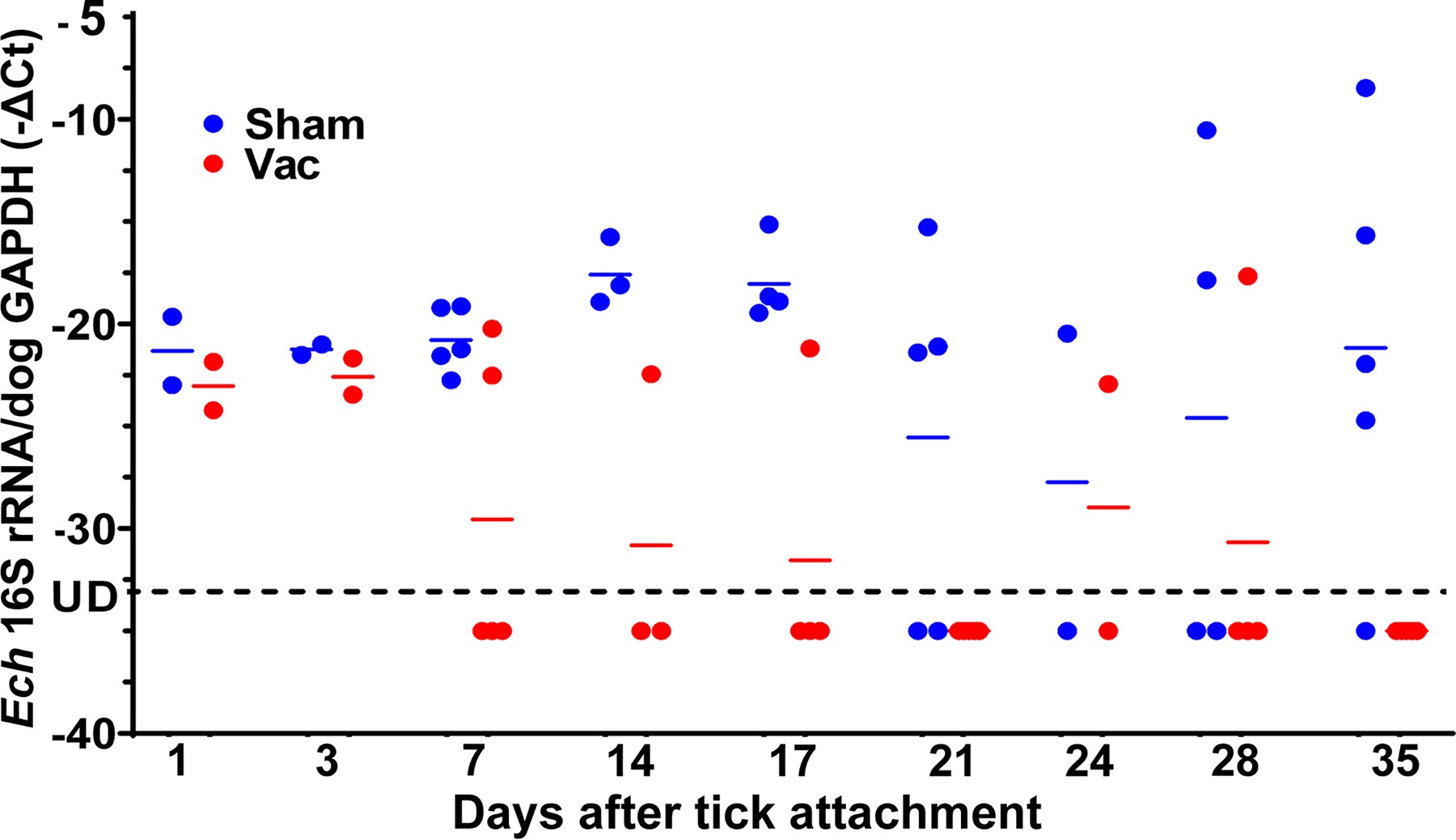Tick-Borne Disease
Generation of a Vaccine Candidate to Protect Against Tick-Borne Ehrlichiosis



Posted November 12, 2020
Yasuko Rikihisa, Ph.D., The Ohio State University

In 1990, an Army reservist stationed at Ft. Chaffee, Arkansas became ill after spending 11 days training in field exercises and reporting exposure to multiple vectors, including ticks.1 Analysis of blood samples from febrile patients stationed at Ft. Chaffee led to the identification of a novel human Ehrlichia bacterial species2 linked to a new human disease that had been characterized 4 years earlier as being similar to Ehrlichia canis, which was most notorious for causing the death of over 200 military dogs during the Vietnam conflict in the 1960s (reviewed in 3,4). This new bacterial species was named Ehrlichia chaffeensis, Arkansas strain after Ft. Chaffee in Arkansas.2
Ehrlichiosis is a tick-borne disease (TBD) caused in humans by the bacteria Ehrlichia chaffeensis, Ehrlichia ewingii, or Ehrlichia muris euclairensis. E. chaffeensis is responsible for the majority of cases in the US, which are predominantly reported from the east coast to Texas, likely due to the prevalence of its primary arthropod vector, Amblyomma americanum, (the lone star tick).5,6 As with many other TBDs, cases of ehrlichiosis (due to E. chaffeenis) continue to rise, with a nearly nine-fold increase between 2000 and 2018.5 Ehrlichiosis also significantly impacts the military, as it accounted for approximately 4.5% of all TBD cases reported by Service members and nearly 6% of all TBD cases reported by their beneficiaries from 2006-2018.7 Notably, similar to other TBDs, it is believed that the incidence of ehrlichiosis is higher than reported due to under-reporting/misdiagnosis, failure of clinicians to suspect/recognize the disease limitations associated with the current diagnostic assays,6 and the fact that passive surveillance is used to account for cases.8
Ehrlichiosis may present with fever, chills, muscle pain, gastrointestinal symptoms, rash, changes to mental status, thrombocytopenia, leukopenia, liver damage, and anemia, among other symptoms, with patients experiencing various combinations of these symptoms.6 If a patient is suspected to have ehrlichiosis, rapid initiation of antibiotics is critical, as delayed initiation of treatment can be fatal.6 Fatality as a result of E. chaffeensis infection occurs in approximately 1% of cases.5 Unfortunately, there is no current vaccine approved for the prevention of human or canine ehrlichiosis.
Dr. Yasuko Rikihisa, Distinguished University Professor at The Ohio State University College of Veterinary Medicine, investigator in Ohio State’s Infectious Diseases Institute and Member of the National Academy of Sciences, is the recipient of a Tick-Borne Disease Research Program-funded award that aims to determine whether the conserved C-terminus of the outer membrane protein entry triggering protein of E. chaffeensis (EtpE-C) has a role in the transmission of E. chaffeensis from tick to human cells, and whether vaccination with recombinant EtpE-C (rEtpE-C) can protect mammals from tick-borne ehrlichia infection.
Given that EtpE is highly expressed in E. chaffeensis-infected tick cell lines and E. chaffeensis infects and replicates in human monocytes, Dr. Rikihisa and her team hypothesized that EtpE may be required for the transmission of E. chaffeensis from tick cells to human cells and that perhaps inhibition of EtpE could inhibit E. chaffeensis spread from tick to mammalian cells. Indeed, the number of E. chaffeensis-infected human monocytes (THP-1 cells) was reduced when naïve monocytes were co-cultured with E. chaffeensis-infected tick cells (ISE6 cells) in the presence of anti-EtpE-C serum, compared to the control cultures treated with pre-immune serum (Figure 1).9 These data indicate that anti-EtpE-C-specific antibodies can inhibit the transmission of E. chaffeensis from tick to human cells in vitro.
In order to determine whether EtpE would be expressed following transstadial transmission of E. chaffeensis in A. americanum ticks and whether these ticks could be used in subsequent in vivo transmission studies, Dr. Rikihisa and her team needle injected engorged nymphal ticks with E. chaffeensis, allowed them to molt, and then analyzed adult ticks using reverse transcription-quantitative polymerase chain reaction (RT-qPCR). All ticks tested were positive for E. chaffeensis, and EtpE was appreciably expressed in the infected adult A. Americanum ticks. These ticks were then used in canine vaccination studies.
To determine whether vaccination with rEtpE-C would result in an immune response capable of protecting against and/or limiting E. chaffeensis infection, canines were vaccinated three times, at 2-week intervals, with rEtpE-C in combination with the nanoparticle immunostimulating complex (ISCOM) or with the sham preparation (ISCOM alone). In the 14-24 days after the final vaccination, 30 ticks were allowed to feed on each animal for 13-15 days. No clinical signs of infection were observed in either sham or vaccinated groups. All rEtpE-C vaccinated animals had substantial antibody titers specific for rEtpE-C, while the sham group did not. To assess vaccine efficacy, the burden of E. chaffeensis in the blood of each experimental group was evaluated at multiple time points post-tick attachment by RT-qPCR for bacterial 16S rRNA (normalized to a housekeeping gene). Notably, at all time points tested, the burden of E. chaffeensis was significantly lower or undetectable in the rEtpE-C-vaccinated animals than in the sham-vaccinated animals, suggesting that vaccination resulted in the clearance of E. chaffeensis infection (Figure 2).9 However, EtpE-C vaccination did not inhibit tick-mediated E. chaffeensis transmission (Figure 2).9 Immune correlates of protection, such as the expression of the cytokine interferon gamma (IFN-g), were assessed at various times post-challenge. IFN-g has previously been correlated with a protective immune response to E. chaffeensis infection10 so its expression was evaluated by ELISpot assay and RT-qPCR. rEtpE-C-vaccinated animals expressed significantly more IFN-g at all time points tested, suggesting that the vaccine induced a memory T cell response that could protect from E. chaffeensis infection.
Taken together, these data suggest that rEtpE-C could be a suitable vaccine candidate to protect against E. chaffeensis, for which there is currently no vaccine. Moreover, vaccination of canines may help to reduce the spread of E. chaffeensis to humans since dogs could, in theory, serve as a subclinical reservoir for bacteria, aiding in the spread of E. chaffeensis to naïve ticks and subsequently increasing the chances of human infection.9 In addition to the references provided, more information about the focus of ongoing studies in Dr. Rikihisa’s laboratory can be found on her laboratory webpages.11,12

Figure 1: Anti-EtpE-C inhibits the transmission of E. chaffeensis from tick cells to human monocytes. Infected tick cells (ISE6 cells) (a) were incubated with uninfected human monocytes (THP-1 cells) (b) in the presence of rabbit preimmune (A) or anti-EtpE-C (B) serum for 2 days. The cocultured cells were labeled with mouse anti-human CD147 (green), a marker for human monocytes. Bacteria and the host cell DNA were labeled with DAPI (pseudocolored red). (C) Quantitation of 200 THP-1 cells each in four independent experiments. * P < 0.05; mean values indicated by horizontal bars.

Figure 2: Canines vaccinated with rEtpE-C rapidly clear E. chaffeensis infection. After attachment of E. chaffeensis-infected ticks, peripheral blood samples from sham-vaccinated animals have a higher burden of E. chaffeensis ribosomal ribonucleic acid (rRNA) than rEtpE-C-vaccinated animals, as determined by RT-qPCR. The difference between the rEtpE-C-vaccinated and sham-vaccinated dogs was significantly different (P = 0.0017) across all days post-infection. Ech, E. chaffeensis; UD, undetectable; mean values indicated by horizontal bars.
Disclaimer:
This research was conducted under an Institutional Animal Care and Use Committee-approved protocol in compliance with the Animal Welfare Act, Public Health Service policy, and other federal statutes and regulations relating to animals and experiments involving animals. The facility where this research was conducted is accredited by the Association for Assessment and Accreditation of Laboratory Animal Care, International and adheres to principles stated in the Guide for the Care and Use of Laboratory Animals.
Citations:
1 Dawson JE, Anderson BE, Fishbein DB, et al. 1991. Isolation and characterization of an Ehrlichia sp. from a patient diagnosed with human ehrlichiosis. J Clin Microbiol. Dec; 29(12):2741-2745. doi: 10.1128/JCM.29.12.2741-2745.1991. PMID: 1757543; PMCID: PMC270425.
2 Anderson BE, Dawson JE, Jones DC, and Wilson KH. 1991. Ehrlichia chaffeensis, a new species associated with human ehrlichiosis. J Clin Microbiol. Dec; 29(12):2838-2842. doi: 10.1128/JCM.29.12.2838-2842.1991. PMID: 1757557; PMCID: PMC270443.
3 McQuiston JH, McCall CL, and Nicholson WL. 2003. Ehrlichiosis and related infections. J Am Vet Med Assoc. Dec 15; 223(12):1750-1756. doi: 10.2460/javma.2003.223.1750. PMID: 14690204.
4 Paddock CD and Childs JE. 2003. Ehrlichia chaffeensis: A prototypical emerging pathogen. Clin Microbiol Rev. Jan; 16(1):37-64. doi: 10.1128/cmr.16.1.37-64.2003. PMID: 12525424; PMCID: PMC145301.
5 https://www.cdc.gov/ehrlichiosis/stats/index.html
6 https://www.cdc.gov/ticks/tickbornediseases/ehrlichiosis.html
7 Data from the Armed Forces Health Surveillance Branch for the years 2006-2018
9 Budachetri K, Teymournejad O, Lin M, et al. 2020. An entry-triggering protein of Ehrlichia is a new vaccine candidate against tick-borne human monocytic Ehrlichiosis. mBio. Jul 28; 11(4):e00895-20. doi: 10.1128/mBio.00895-20. PMID: 32723916; PMCID: PMC7387794.
10 Barnewall RE and Rikihisa Y. 1994. Abrogation of gamma interferon-induced inhibition of Ehrlichia chaffeensis infection in human monocytes with iron-transferrin. Infect Immun. Nov; 62(11):4804-10. doi: 10.1128/IAI.62.11.4804-4810.1994. PMID: 7927758; PMCID: PMC303190.
11 https://vet.osu.edu/rikihisa-yasuko
Last updated Thursday, December 5, 2024














